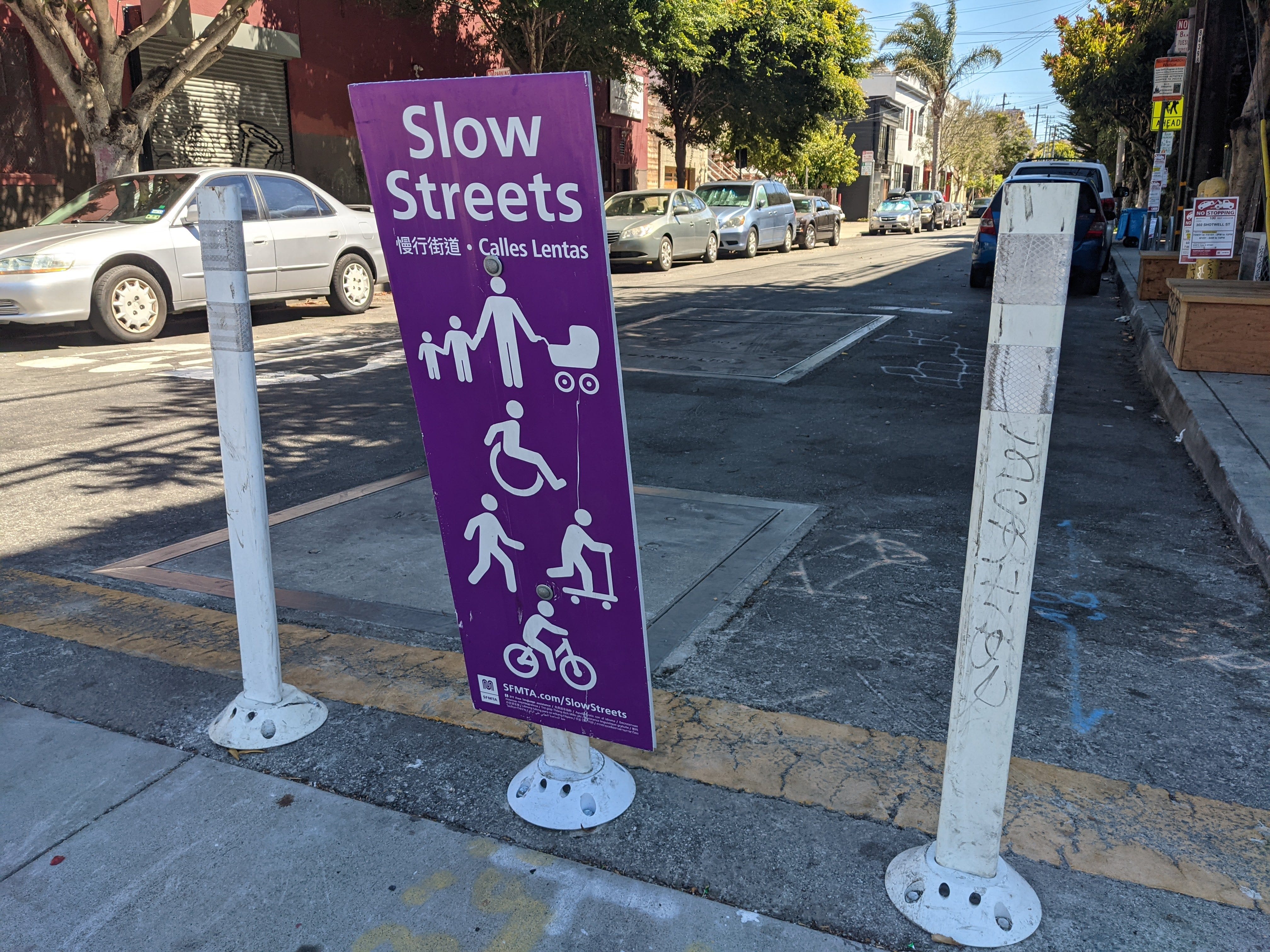
Sections of Golden Gate Avenue, Lake Street, Sanchez Street, and Shotwell Street will remain part of the City’s Slow Streets program beyond the end of the pandemic. And these permanent Slow Streets are just the beginning, as shared-use corridors are part of San Francisco’s most recent attempt to emerge from its long-lasting alternative transportation identity crisis.
The crisis started long before the pandemic. Despite the safety and environmental benefits of alternative transportation (walking, public transit, and micromobility vehicles), it’s never been easy to live in SF without owning a car. Though Market Street went car-free just before the pandemic, ride sharing services still made huge profits from the city’s otherwise spotty public transportation network. During the pandemic, ride-sharing slumped, but Bay Area car sales rose unexpectedly.
Sign up for The Bold Italic newsletter to get the best of the Bay Area in your inbox every week.
Many people took to driving as the city gutted transit schedules and removed entire bus routes.
Though Slow Streets are well known as spaces for socially distanced exercise, they were also created to aid in essential travel during the lockdown. As community enthusiasm grew the program from 13 miles of roadway to what is over 45 miles today, SFMTA focused all the more on Slow Streets getting people where they needed to go. They started using Slow Streets to build a “network that allows most San Franciscans to be able to access essential services and employment without being reliant on either a car or Muni,” according to a July 2020 blog post. Today, Slow Streets are part of the SFMTA’s public transit recovery plan.
Three of the four new permanent Slow Streets cross large portions of their containing neighborhoods, so there’s certainly potential for these shared-use corridors to relieve pressure on public transit as demand increases. However, the potential isn’t proof, and debates rage over the future of Slow Streets. The most prominent of these debates is an ongoing argument over whether or not to keep the Great Highway car-free. People in the August 3rd SFMTA Board meeting voiced concerns about traffic pattern changes on adjacent blocks, trouble accessing homes on Slow Streets, and increases in nearby crime, noise, and activity.
Concerns also remain over the long-term design and enforcement of permanent Slow Streets. The “No Through Traffic” signs don’t deter all through traffic, and lack of clear lane markings can create free-for-alls that are often unsafe for pedestrians. Jodie Medeiros, Executive Director of Walk SF, also suggests the installation of more seating along Slow Streets to increase usability for senior citizens and people with disabilities.
Even with these first permanent Slow Streets approved, the future extent of the program, and of alternative transportation in San Francisco, remains uncertain. This small step isn’t enough to make a meaningful difference in how city residents get around. But as SF public transit continues expanding back to pre-pandemic levels, and the delta variant is on the rise, now’s a good time to seriously consider how pandemic-friendly alternative transportation options, like Slow Streets, fit into the picture.
Medeiros hopes that these permanent Slow Streets are “a glimpse at a different kind of future for San Francisco, one where it’s safe and easy for many more people to get around on foot and bicycle…We will be a stronger city with a citywide network of Slow Streets.”







